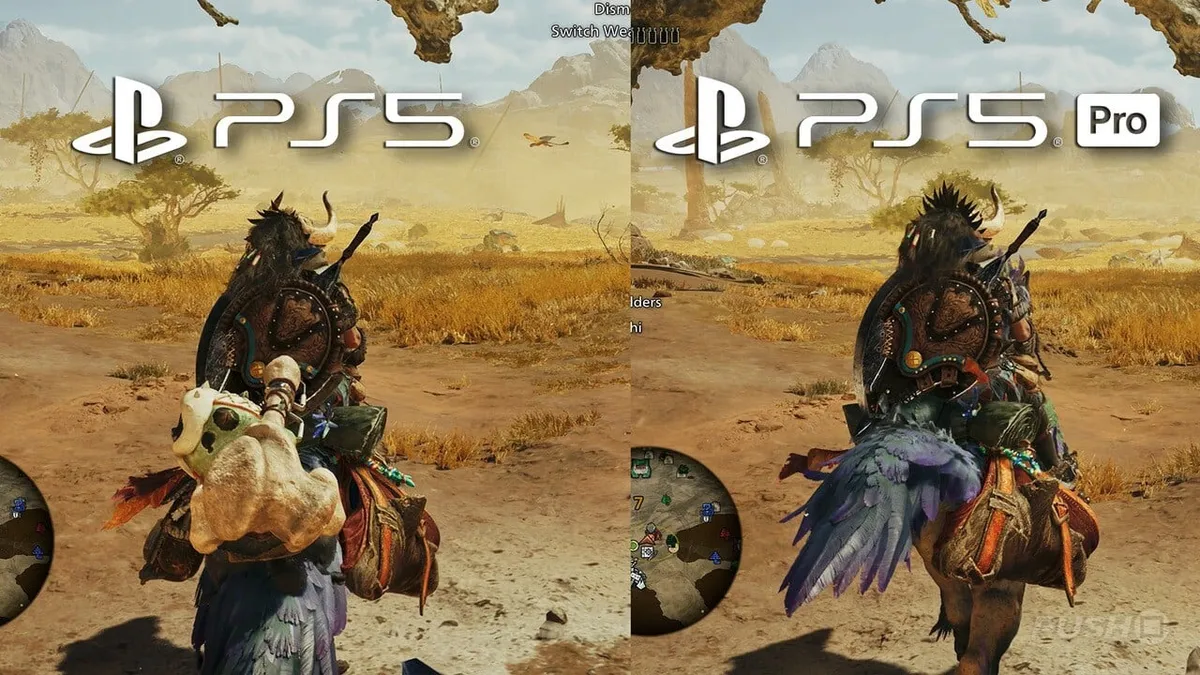
The ongoing debate between gamers regarding the PS5 Pro and its predecessor, the base PS5, continues to gain traction. According to Digital Foundry, the PS5 Pro is touted as the best console version available, although there are lingering hopes for further enhancements. The PS5 Pro operates at a steady 60fps, offering a clearer and more stable image, while the base PS5 delivers a sharper image, largely due to its post-processor sharpening capabilities. The question remains: why can't the PS5 Pro utilize post-processor sharpening alongside PSSR to provide gamers with the ultimate visual experience? This remains a mystery.
The PS5 Pro offers a substantial performance boost, particularly in its 40fps mode. This mode delivers approximately 69% more base resolution compared to the 60fps mode, translating to 1080p versus 1404p (or 2.1 million pixels vs. 3.5 million pixels). Additionally, it includes Ray Tracing and PSSR, which significantly enhances the visuals in motion. Notably, the PS5 Pro has around 31% more base pixels than the PS4's 40fps mode, and the 60fps mode contains about 44% more base pixels than the standard PS5, further emphasizing its improved capabilities.
Many gamers, including @OptimusPrime1, have noted that using an OLED TV can make 30fps content challenging to play. The near-instant response time of OLED displays makes frame rate inconsistencies more perceptible. While OLED technology excels in many areas, it struggles with low frame rates, leading to a less enjoyable gaming experience. After testing the game on the PS5 Pro, players have remarked on the significant improvements in the 40fps mode, especially when played on high-quality displays like the LG C3.
In terms of visual quality, the PS5 Pro's PSSR technology proves to be a game-changer. While still exhibiting some rough edges, the absence of SSR artifacts results in a much cleaner image. However, some gamers express nostalgia for the developers’ previous work with the MT framework engine, feeling that the current iteration has lost some of its uniqueness, resembling a typical Hollywood blockbuster.
Accessibility features, such as the controversial arachnophobia mode, have sparked debates among players. While some view these features as a necessary inclusion, others believe they detract from the overall gaming experience. As @Realist points out, the presence of such toggles in a game designed for older teens raises questions about the direction of modern gaming. The sentiment is echoed by other users who argue that games should focus on core themes rather than adapting to every phobia.
When comparing the PS5 Pro and base PS5, the consensus among players is that side-by-side comparisons can often be misleading, especially when viewed on compressed platforms like YouTube. Many agree that the differences in graphics, particularly concerning reflections and lighting, are much more apparent when played on a proper display at home. The PS5 Pro's enhancements are especially noticeable in terms of resolution and overall visual fidelity, making the upgrade worthwhile for serious gamers.
As game developers navigate the complexities of scaling performance across multiple platforms, including the base PS4, the PS5 Pro emerges as a viable solution for those seeking superior graphics. Players have noted that the performance improvements on the Pro are immediately obvious, especially when viewed on a high-resolution screen. The Pro version of games like Monster Hunter not only looks significantly better but also runs smoother, reinforcing its status as an essential upgrade for dedicated gamers.
In conclusion, while the PS5 Pro has made significant strides in improving performance and visual quality, the ongoing discussions about accessibility features and the overall gaming experience continue to evolve. As developers push the boundaries of gaming technology, players eagerly await further enhancements that will elevate their gaming adventures.